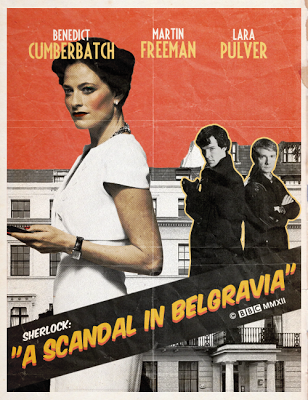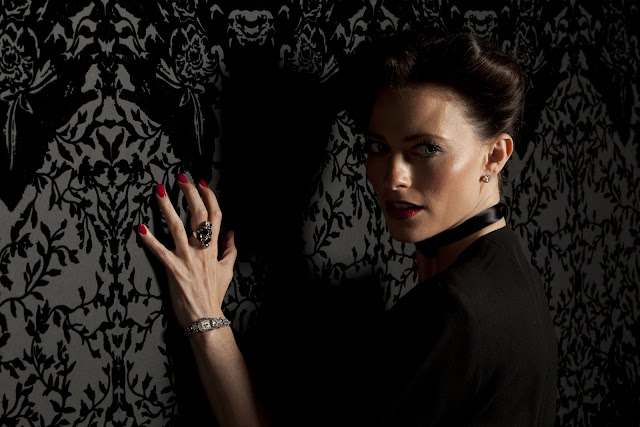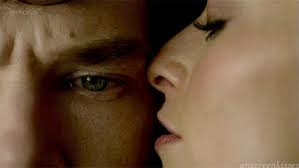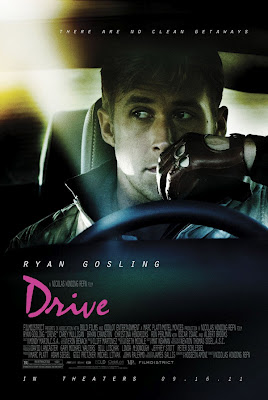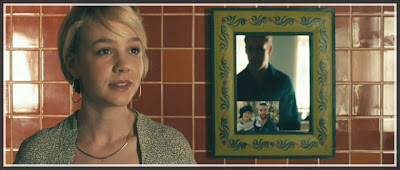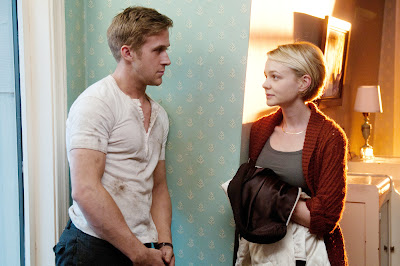The woman who lures men to their doom is a trope that goes back to the earliest days of film. Theda Bara, one of the first silent screen actresses to have an image of wanton carnality instead of the virginal purity of other stars of the era like Mary Pickford and Lillian Gish, was referred to as a “vamp“–short for vampire– for her sexy roles in which she proved the downfall of the men attracted to her. “Vampy” and femme fatale characters have provided career peaks for many actresses since, from classic Hollywood film noir–Barbara Stanwyck in Double Indemnity and Lana Turner in The Postman Always Rings Twice through the late 20th century with Kathleen Turner in Body Heat in the 80s and Linda Fiorentino in The Last Seduction in the 90s. In this century, the vampire of Let The Right One In (and its inferior American remake), who appears to the world an ordinary 12-year-old girl, manages to enlist both a man and a boy as her servants (while preying on others for fresh blood).
Most of these films demonstrate a lack of curiosity about how these women came to be the characters we see: no one in real life becomes as deceptive, manipulative, and callous toward others as these characters are without a backstory, which usually never makes it into these films. So we’re probably overdue for a femme fatale who literally drops, fully formed from the sky: Scarlett Johansson’s main, unnamed character in Jonathan Glazer’s Under The Skin, an alien in the guise of a beautiful woman. Johansson, wearing a short black wig, drives around Scotland in a nondescript white van asking men walking alone along the road for directions and then, if she ascertains, through a few questions, that they won’t be missed, she offers them a ride.

We’re cued to how the main character sees human beings in one of the earliest scenes in which a naked Johansson strips the clothes from a freshly killed young woman (it’s unclear whether Johansson or her silent male assistant–also an alien in human guise–did the deed), so she can wear them as her own. As a tear falls down the dead woman’s face, Johansson’s character picks up an ant crawling on the woman’s now naked body and focuses on it as if it were a puppy. The ant helps explain Johansson’s attitude to humans: she’s not cruel. She just sees them as expendable and as removed from her own existence as most of us see insects.
The media and the filmmakers have made a point of revealing that some (but not all) of the encounters Johansson has in the van were unscripted, the men in them random passersby (who didn’t recognize the star of The Avengers), the camera hidden. This information seems pointless given how ordinary those conversations are–as far as we can tell. The accents of most of these men are so heavy they should have been subtitled for American audiences and perhaps UK ones as well.

But Glazer has a great touch with professional actors: he made the justly acclaimed Sexy Beast with Ben Kingsley as an unforgettable, ultraviolent, pint-size gangster: the anti-Gandhi. In Glazer’s less acclaimed (but still creepy and atmospheric) Birth he gave us a stricken, affecting Nicole Kidman (also in a short wig) as a woman accosted by an 10-year-old boy who convinces her he is the reincarnation of her dead husband. Johansson hasn’t always impressed me in her movie roles, (I didn’t believe a minute of Her: Johansson’s performance as Samantha was not the whole reason why, but certainly didn’t help) and in interviews she seems to confirm our worst suspicions of how ill-informed and insensitive to people outside their sphere movie stars can be. But she pulls the audience in here, as if we too are her victims, a relief, since for much of the film Johansson is the sole, silent person onscreen. In other scenes, when she talks to the men in a passable English accent (which sounds more natural than the Jersey accent she used in Don Jon) her eyes glitter with emotion. At first we mistake this passion for empathy (and the men mistake it for lust), but her excitement turns out to be the thrill of the hunt.
Each unlucky man follows her into a room (while the disturbing score by Mica Levi plays in the background) in which she strips her clothing as she walks, encouraging the man to do the same (this film isn’t one that discriminates in its nudity: the actors who go to her place are shown in full-frontal shots, two of them with erections) Without realizing he is doing so, his eyes focused on Johansson each man sinks completely into the black hole/digestive tank under his feet, while she pads across the smooth surface like a cat.

In the outside world, we see her knock out a swimmer who saves a man from drowning (the man then tragically goes back into the water to try to save his wife) and ignore the screaming toddler the couple has left behind on the beach. She starts to feel for the humans around her only when, outside of the insular world of her van, walking on city streets, she trips and falls face first on the sidewalk–and men like the ones she has been preying on help her up and ask if she’s okay. She’s as disconcerted by their doing so as if a small band of dragonflies did the same for one of us.
Later she picks up a loner (Adam Pearson) who appears to have the same disease as The Elephant Man (the actor has Neurofibromatosis), his facial features radically distorted. Because she’s an alien, Johansson’s character neither looks away from his face nor stares at it. She stops the van, asks him if he’s ever touched a woman and places his hand on her neck. She does take him back to her place, but the sight of a trapped fly trying to escape a room sparks something in her conscience. She flees the city (and her male assistant) to the Scottish Highlands where she experiences both the best and worst of human nature in men (she rarely interacts with women).
In this latter part of Skin the filmmakers seem to want to show Johansson’s character finding out what being human means. The problem is: Johansson’s character knows, from the start of the film how to be, by all appearances, a human woman— and the filmmakers never seem curious how she learned to do so. This film isn’t big on explanation–for anything, but this omission nagged at me in a way the other missing pieces didn’t.
The guise Johansson’s character chooses for herself is one which seems like it would require some research. Like the vampire in Let The Right One In she knows inhabiting a female form will make humans less wary of her, but she also somehow knows to take on all the arbitrary and sometimes contradictory attributes that make a woman attractive in the Western contemporary movie-star/model sense: full breasts (but a small waist), full lips (but a small jaw) and large eyes (but slender eyebrows). Equally puzzling, Johansson’s character knows, from the start, how to act like a conventionally attractive woman. She puts on a bra as if she had spent her adult life doing so; she walks in heels (she even knows to run down stairs in them–sideways, so she won’t trip) without wavering or falling (except for the one time); she applies makeup so it accentuates rather than makes grotesque her eyes and lips. Teenage, femme girls spend years wobbling and stumbling in heels and using too heavy a hand with blush and eyeliner before getting the hang of any of these things, but the filmmakers seem to think these skills come naturally with a female body, the way prizes used to come in cereal boxes. Johansson’s character never says a wrong word or has an awkward moment when she flirts with the men: she doesn’t talk to them with a young teenage girl’s uncertainty, but with the easy confidence of someone who has garnered male attention for most of her years.
If we had seen Johansson’s character struggle and falter with being a convincing, normal-seeming woman earlier in the film, we could better understand–and more easily suspend our belief for–her struggle later with the trials of being in a woman’s body. She has no idea how to maneuver amid men’s various intentions toward her, like the consensual encounter she cuts short when she finds, to her shock (in one of the film’s few comic moments) just what comprises heterosexual intercourse.
Toward the end, Johansson’s character removes the mask she has been wearing throughout the film, and as she looks down on it, it blinks back at her. It’s a visually stunning moment that might have been more emotionally resonant if the filmmakers had bothered to better explore what the world–and movies–expect women to be.
[youtube_sc url=”http://www.youtube.com/watch?v=NoSWbyvdhHw”]
___________________________________________________
Ren Jender is a queer writer-performer/producer putting a film together. Her writing has appeared in The Toast, xoJane and the Feminist Wire. You can follow her on Twitter @renjender.










